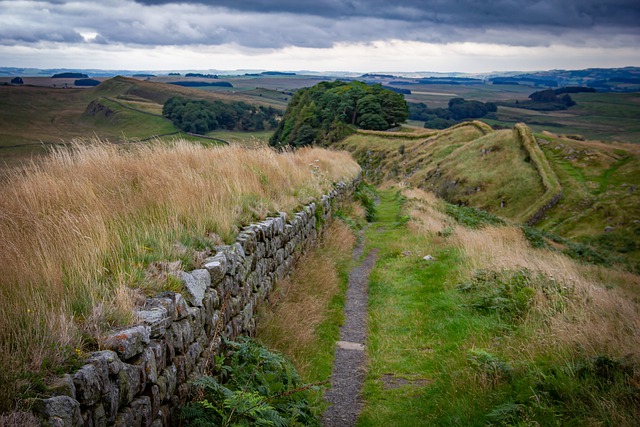By Tim Lambert
In 55 BC Julius Caesar led an expedition to Britain. Caesar returned in 54 BC. Both times he defeated the Celts but he did not stay. Both times the Romans withdrew after the Celts agreed to pay an annual tribute. The Romans invaded Britain again in 43 AD under Emperor Claudius. The Roman invasion force consisted of about 20,000 legionaries and about 20,000 auxiliary soldiers from the provinces of the Roman Empire. Aulus Plautius led them.
The Romans landed somewhere in Southeast England (the exact location is unknown) and quickly prevailed against the Celtic army. The Celts could not match the discipline and training of the Roman army. A battle was fought on the River Medway, ending in Celtic defeat and withdrawal. The Romans chased them over the River Thames into Essex and within months of landing in England, the Romans had captured the Celtic hill fort on the site of Colchester.
Meanwhile, other Roman forces marched into Sussex, where the local tribe, the Atrebates were friendly and offered no resistance. The Roman army then marched into the territory of another tribe, the Durotriges, in Dorset and southern Somerset. Everywhere the Romans prevailed and that year 11 Celtic kings surrendered to Claudius. (Normally if a Celtic king surrendered the Romans allowed him to remain as a puppet ruler). By 47 AD the Romans were in control of England from the River Humber to the Estuary of the River Severn. However, the war was not over. The Silures in South Wales and the Ordovices of North Wales continued to harass the Romans. Fighting between the Welsh tribes and the Romans continued for years.
Meanwhile, the Iceni tribe of East Anglia rebelled. At first, the Romans allowed them to keep their kings and have some autonomy. However, the Romans easily crushed it. In the ensuing years, the Romans alienated the Iceni by imposing heavy taxes. Then, when the king of the Iceni died he left his kingdom partly to his wife, Boudicca, and partly to Emperor Nero.
Soon, however, Nero wanted the kingdom all for himself. His men treated the Iceni very badly and they provoked rebellion. This time a large part of the Roman army was fighting in Wales and the rebellion was, at first, successful. Led by Boudicca the Celts burned Colchester, St Albans, and London. However, the Romans rushed forces to deal with the rebellion. Although the Romans were outnumbered their superior discipline and tactics secured total victory.
After the rebellion was crushed the Celts of what is now southern and eastern England settled down and gradually accepted Roman rule. Then in 71-74 CE, the Romans conquered the north of what is now England. In 122-126 CE Emperor Hadrian built a great wall across the northern frontier of Roman Britain to keep out the people the Romans called the Picts.
By the middle of the 3rd century, the Roman Empire was in decline. In the latter half of the 3rd century, Saxons from Germany began raiding the east coast of Roman Britain. The Romans built a chain of forts along the coast, which they called the Saxon shore. The forts were commanded by an official called the Count of the Saxon Shore and they contained both infantry and cavalry.
However, the Saxon raids were, at first, no more than pinpricks, and most of Roman Britain remained reasonably peaceful and prosperous. Then in 286, an admiral named Carausius seized power in Britain. For 7 years he ruled Britain as an emperor until Allectus, his finance minister, assassinated him. Allectus then ruled Britain until 296 when Constantius, Emperor of the Western Roman Empire invaded. Britain was then taken back into the Roman fold.
In the 4th century, the Roman Empire in the West went into serious economic and political decline. The populations of towns fell. Public baths and amphitheaters went out of use. In 367 Scots from Northern Ireland, Picts from Scotland and Saxons joined to raid Roman Britain and loot it. They overran Hadrian’s Wall and killed the Count of the Saxon shore. However, the Romans sent a man named Theodosius with reinforcements to restore order.

In 383 some Roman soldiers were withdrawn from Britain and the raiding grew worse. The last Roman troops left Britain in about 410.
Roman Britain split into separate kingdoms but the Romano-Celts continued to fight the Saxon raiders. Roman civilization slowly broke down. In the towns, people stopped using coins and returned to barter.
The populations of towns were already falling and this continued. Rich people left to be self-sufficient on their estates. Craftsmen went to live in the countryside. More and more space within the walls of towns was given over to growing crops. Roman towns continued to be inhabited until the mid-5th century. Then most were abandoned. Some may not have been deserted completely. A small number may have still had a very small population who lived by farming land inside and outside the walls. However town life as such came to an end. In the 5th century Roman civilization in the countryside faded away.